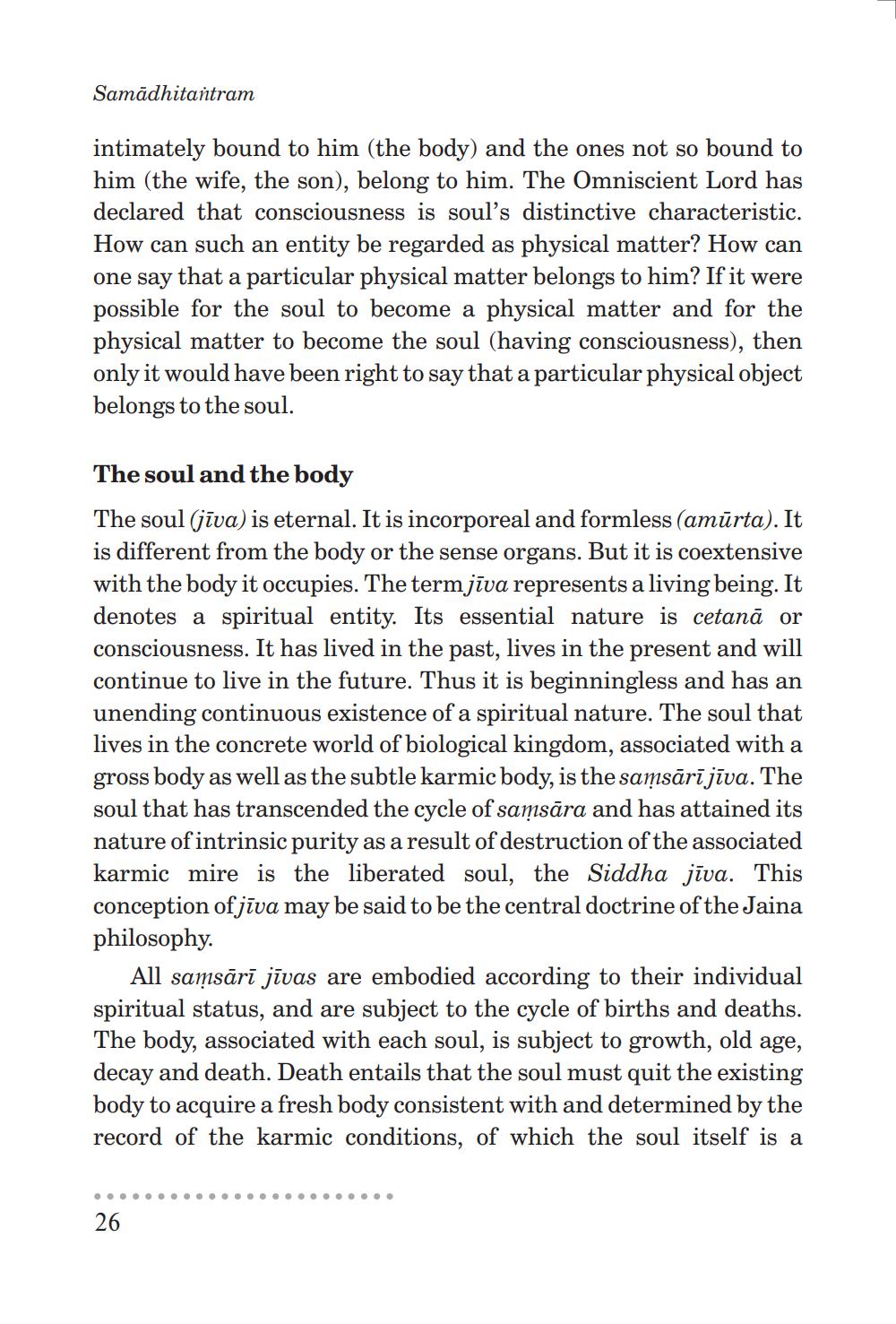________________
Samādhitantram
intimately bound to him (the body) and the ones not so bound to him (the wife, the son), belong to him. The Omniscient Lord has declared that consciousness is soul's distinctive characteristic. How can such an entity be regarded as physical matter? How can one say that a particular physical matter belongs to him? If it were possible for the soul to become a physical matter and for the physical matter to become the soul (having consciousness), then only it would have been right to say that a particular physical object belongs to the soul.
The soul and the body The soul (jīva) is eternal. It is incorporeal and formless (amūrta). It is different from the body or the sense organs. But it is coextensive with the body it occupies. The term jīva represents a living being. It denotes a spiritual entity. Its essential nature is cetanā or consciousness. It has lived in the past, lives in the present and will continue to live in the future. Thus it is beginningless and has an unending continuous existence of a spiritual nature. The soul that lives in the concrete world of biological kingdom, associated with a gross body as well as the subtle karmic body, is the samsārījīva. The soul that has transcended the cycle of samsāra and has attained its nature of intrinsic purity as a result of destruction of the associated karmic mire is the liberated soul, the Siddha jiva. This conception of jīva may be said to be the central doctrine of the Jaina philosophy.
All samsārī jīvas are embodied according to their individual spiritual status, and are subject to the cycle of births and deaths. The body, associated with each soul, is subject to growth, old age, decay and death. Death entails that the soul must quit the existing body to acquire a fresh body consistent with and determined by the record of the karmic conditions, of which the soul itself is a
........................ 26




